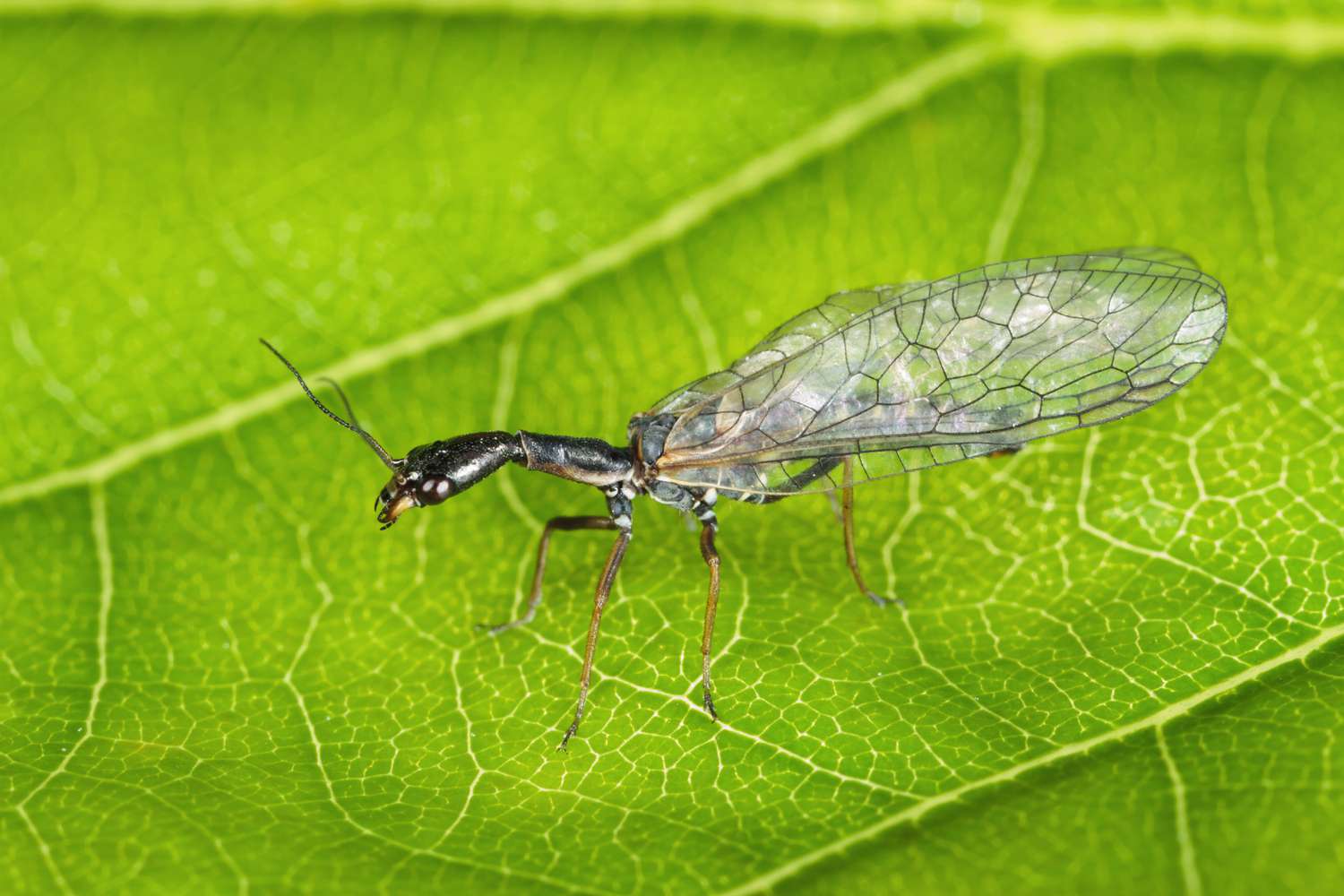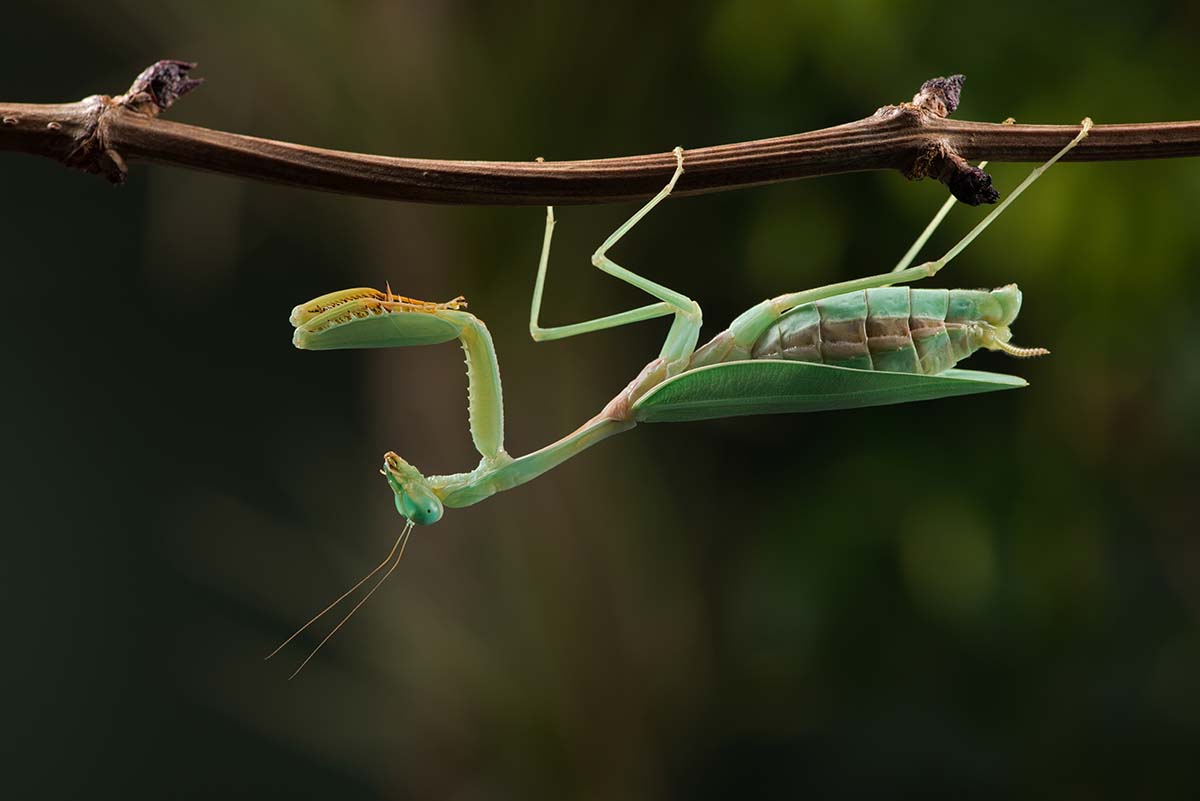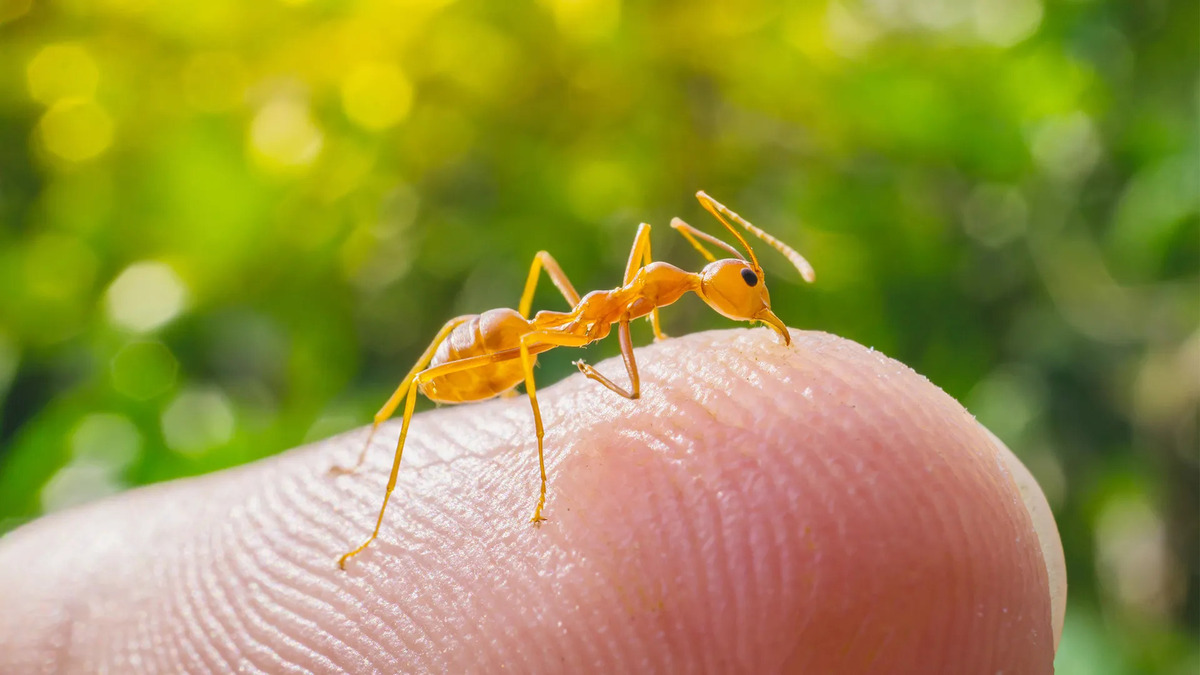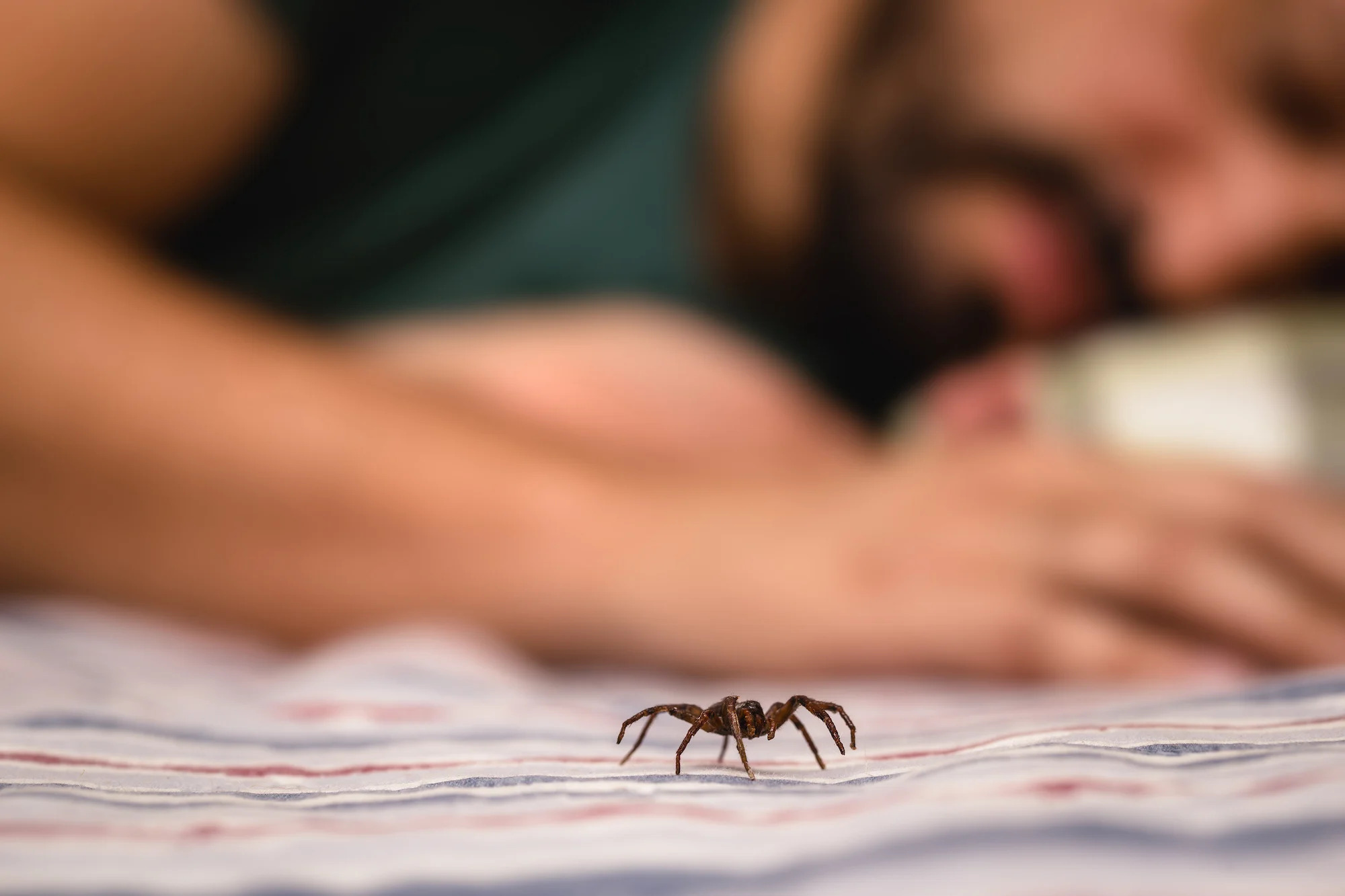Home>Gardening News and Trends>Latest News>How Many Orders Of Insects


Latest News
How Many Orders Of Insects
Modified: January 22, 2024
Discover the latest news and updates on how many orders of insects there are in the world. Stay informed and learn about the fascinating diversity of insect species.
(Many of the links in this article redirect to a specific reviewed product. Your purchase of these products through affiliate links helps to generate commission for Chicagolandgardening.com, at no extra cost. Learn more)
Table of Contents
- Introduction
- Order Coleoptera (Beetles)
- Order Diptera (Flies)
- Order Hymenoptera (Ants, Bees, Wasps)
- Order Lepidoptera (Butterflies, Moths)
- Order Hemiptera (True Bugs, Cicadas)
- Order Orthoptera (Grasshoppers, Crickets)
- Order Odonata (Dragonflies, Damselflies)
- Order Blattodea (Cockroaches, Termites)
- Order Mantodea (Mantises)
- Order Phasmatodea (Stick Insects)
- Order Neuroptera (Lacewings, Antlions)
- Order Isoptera (Termites)
- Conclusion
Introduction
Insects are the most diverse group of animals on Earth, accounting for over 80% of all known animal species. They can be found in almost every habitat, from deep ocean trenches to lofty mountain peaks. With their incredible adaptability and wide distribution, it’s no wonder that insects have captivated the attention of scientists and nature enthusiasts alike.
But did you know that not all insects belong to the same order? In fact, there are over 30 different orders of insects, each with its own unique characteristics and traits. These orders are based on a variety of factors, including the structure of their wings, mouthparts, and other distinguishing features.
In this article, we will explore some of the most well-known orders of insects and discover what sets them apart from one another. From the beautiful butterflies of the Lepidoptera order to the industrious ants and bees of the Hymenoptera order, we will delve into the fascinating world of insect diversity.
So, whether you’re a budding entomologist or simply curious about the incredible variety of life on our planet, join us on this journey as we uncover the wonders of the insect kingdom.
Order Coleoptera (Beetles)
With over 400,000 known species, the Order Coleoptera, commonly known as beetles, is the largest order of insects. Beetles can be found in almost every habitat on Earth, from tropical rainforests to arctic tundra. They are characterized by their hard outer wing covers, known as elytra, which protect their delicate flying wings underneath.
Beetles exhibit an astounding diversity in size, shape, and coloration. From tiny, darkling beetles measuring just a few millimeters long to the impressive titan beetle, which can reach lengths of over 6 inches, there is a beetle to capture everyone’s attention.
One of the most well-known suborders of beetles is the Polyphaga, which includes popular families such as ladybirds, weevils, ground beetles, and scarab beetles. Ladybirds, or ladybugs, are beloved for their vibrant colors and distinct spotted patterns. Many of them are beneficial predators, feeding on aphids and other garden pests. Weevils, on the other hand, are known for their elongated snouts and feed primarily on plants, while ground beetles are known for their agility and predatory nature.
The order Coleoptera is not only diverse in appearance but also in behavior and ecological roles. Many beetles play crucial roles in ecosystems as decomposers, pollinators, or prey for other organisms. Some beetles, like dung beetles, have specialized adaptations to break down animal dung, contributing to nutrient recycling. Others, like the carrion beetles, help in the decomposition of dead animals.
Beetles have also been of great economic importance to humans. Some species, such as the flour beetles and grain weevils, are notorious pests that damage stored foodstuffs. Conversely, the brightly colored beetles of the Jewel Beetle family have been prized for their iridescent shells, which are used in jewelry and decorative arts.
Overall, the beetles of the order Coleoptera truly exemplify the marvels of insect diversity. With their incredible adaptations, ecological roles, and economic significance, it is no wonder that beetles have captured the fascination of scientists and enthusiasts for centuries.
Order Diptera (Flies)
When we think of flies, we often picture annoying creatures buzzing around our heads. However, flies are not just pests – they belong to the fascinating Order Diptera, which is characterized by having only two wings. With over 160,000 species identified so far, flies are incredibly diverse and can be found in almost every corner of the globe.
Diptera is a Greek word meaning “two wings,” and this distinctive feature sets flies apart from other insects. While other insects typically have four wings, flies have evolved to have a pair of modified wings called halteres. These halteres act as balancing organs, helping flies maintain stability in flight.
Flies come in various shapes and sizes. For example, the housefly (Musca domestica) is a common fly species known for its ability to spread disease. Fruit flies (Drosophila) are tiny insects that infest ripe fruits and have become essential research subjects in genetics and biological studies.
One unique characteristic of flies is their mouthparts, which are adapted for sucking or lapping. Mosquitoes, a well-known type of fly, have elongated mouthparts that allow them to pierce the skin of animals and feed on blood. Other flies, like the housefly, have sponge-like mouthparts that enable them to feed on liquids.
Flies have also evolved a remarkable array of behaviors and feeding habits. Some species, such as hoverflies, mimic the appearance of bees or wasps as a defense mechanism. They gain protection from predators by appearing more dangerous than they actually are. Other flies, like horseflies, are known for their painful bites and feed on the blood of larger animals.
In the ecological realm, flies have important roles as decomposers and pollinators. In the larval stage, flies play a vital role in breaking down dead organic matter, aiding in nutrient recycling in ecosystems. Additionally, flies such as bees and hoverflies are important pollinators, transferring pollen from flower to flower as they feed on nectar.
While some flies are considered pests because they can transmit diseases or cause annoyance, many species serve essential ecological functions. Flies are a crucial part of the intricate web of life on Earth, highlighting the importance of their existence.
In summary, the Order Diptera encompasses a remarkable group of insects, with a wide range of species and fascinating adaptations. From their unique wing structure to their varied feeding habits and ecological roles, flies are an integral part of the natural world.
Order Hymenoptera (Ants, Bees, Wasps)
The Order Hymenoptera comprises some of the most remarkable social insects, including ants, bees, and wasps. With over 150,000 identified species, Hymenoptera is known for its complex societies, diverse behaviors, and important ecological roles.
Ants are arguably the most well-known members of the Hymenoptera order. They are highly social insects, living in organized colonies with distinct roles for workers, soldiers, and the queen. Ants display remarkable cooperation and communication within their colonies, employing chemical signals called pheromones to coordinate their activities.
Bees are also social insects that live in structured colonies. They are known for their crucial role as pollinators, playing a vital role in the reproduction and survival of many plant species. Bees collect nectar and pollen from flowers, which they use as food for themselves and their developing larvae. They are highly efficient pollinators due to their hairy bodies and specialized body parts that allow them to transport pollen from flower to flower.
Wasps, although often feared and misunderstood, play important ecological roles. Many wasps are parasitic and lay their eggs inside other insects, such as caterpillars or spiders. The wasp larvae then feed on the host until they emerge as adults. These parasitic wasps help control populations of other insects, contributing to natural pest control.
One fascinating aspect of Hymenoptera is the stinging ability found in many species. Ants, bees, and wasps possess stingers that they use for defense or subduing prey. While stings can be painful or even deadly in some cases, they are primarily a means of protection for these insects.
Hymenoptera exhibit impressive diversity in their physical appearance. Ants come in various sizes and colors, while bees are known for their fuzzy bodies and striking yellow and black markings. Wasps, on the other hand, often have slender bodies and vibrant colorations, warning potential predators about their ability to sting.
Furthermore, members of the Hymenoptera order possess a high level of intelligence and complex behaviors. Ants, for example, demonstrate sophisticated navigation skills, foraging strategies, and nest construction. Bees are renowned for their ability to communicate the location of food sources through intricate dances known as “waggle dances.”
In summary, the Order Hymenoptera encompasses a diverse group of insects that includes ants, bees, and wasps. Their complex social structures, vital roles as pollinators, and diverse behaviors make them both fascinating and ecologically significant. Understanding and appreciating the world of Hymenoptera allows us to witness the incredible complexity and adaptability of the insect kingdom.
Order Lepidoptera (Butterflies, Moths)
The Order Lepidoptera consists of some of the most enchanting and diverse insects on Earth: butterflies and moths. With approximately 180,000 known species, Lepidoptera captures our imagination with their vibrant colors, delicate wings, and distinctive life cycles.
Butterflies and moths share many similarities, but they also have some distinguishing features. Butterflies are typically active during the day, while moths are predominantly nocturnal. Butterflies tend to have slender bodies, clubbed antennae, and brighter colors, while moths often have plump bodies, feather-like antennae, and more muted hues. However, these are generalizations, and there are exceptions within each group.
Lepidoptera are renowned for their striking patterns and iridescent scales that adorn their wings. These scales not only provide vibrant colors but also serve as protection, helping to camouflage the insects from predators or warn them of their unpalatability.
One of the most captivating aspects of Lepidoptera is their fascinating life cycle, which involves complete metamorphosis. It begins with an egg, followed by a larval stage in which the caterpillar feeds voraciously on host plants. The caterpillar then enters the pupal stage, encasing itself in a protective cocoon or chrysalis. Inside this protective structure, the caterpillar undergoes a remarkable transformation and emerges as a beautiful butterfly or moth.
Butterflies and moths are not only admired for their beauty but also have important ecological roles. As pollinators, they play a vital role in the reproduction of many flowering plants. As they sip nectar from flowers, they inadvertently transfer pollen from one flower to another, facilitating cross-pollination and ensuring the survival of plant species.
Additionally, Lepidoptera larvae, or caterpillars, are a crucial part of many food chains. They serve as a significant food source for birds, small mammals, and other insects. Their role as both herbivores and prey helps maintain the delicate balance of ecosystems.
Butterflies and moths have captured the human imagination for centuries, inspiring art, literature, and cultural symbolism. Their elegant flight patterns, graceful movements, and ephemeral beauty make them a symbol of transformation and the cyclical nature of life.
Conservation efforts are vital to protect these delicate creatures, as many butterfly and moth species are facing threats due to habitat loss, climate change, and pesticide use. By preserving their natural habitats and creating butterfly gardens, we can contribute to the preservation of Lepidoptera and appreciate their incredible beauty for generations to come.
Order Hemiptera (True Bugs, Cicadas)
The Order Hemiptera encompasses a diverse group of insects known as true bugs, which includes familiar creatures like cicadas, aphids, and bed bugs. With over 80,000 identified species, Hemiptera distinguishes itself through its unique mouthparts and feeding habits.
True bugs possess piercing-sucking mouthparts, which they use to extract fluids from plants, animals, or other insects. These mouthparts are specialized structures that allow them to pierce through surfaces and feed on sap, nectar, or even blood. This feeding behavior sets Hemiptera apart from other insect orders.
One of the most recognizable members of the Hemiptera order is the cicada. These large, noisy insects are known for their distinct mating calls that can be heard during the warm summer months. Cicadas have transparent wings, prominent eyes, and powerful legs, enabling them to jump and fly with ease. They spend most of their lives underground as nymphs, emerging as adults to mate and lay eggs on trees.
Aphids, another common group within Hemiptera, are small insects that feed on the sap of plants. They have soft bodies, often with a pair of cornicles on their backs that excrete a sugary substance called honeydew. Aphids can reproduce rapidly, leading to pest problems in gardens and agricultural fields. However, they are also preyed upon by other insects, making them an essential part of the food chain.
Hemiptera consists of various families, each with its own unique adaptations and behaviors. For example, the assassin bugs are predatory insects that use their long, pointed mouthparts to impale their prey and inject digestive enzymes into them. Leafhoppers are known for their extraordinary jumping abilities, while water bugs are skilled swimmers and can even live underwater.
Some Hemiptera species have significant economic importance. For instance, bed bugs have plagued human settlements for centuries, feeding on the blood of their hosts and causing discomfort. Agricultural pests like stink bugs and shield bugs can damage crops by piercing plant tissues and extracting plant sap.
Despite their varying habits and appearances, true bugs are united by their unique half-wing structure. The front half of their forewings is leathery, while the rear half is transparent. When at rest, these leathery forewings form an X-shape along the insect’s back.
In summary, the Order Hemiptera comprises a diverse array of insects known as true bugs. From the enchanting songs of cicadas to the delicate sap-sipping aphids, these insects exhibit a wide range of adaptations and behaviors. Understanding Hemiptera not only expands our knowledge of insect diversity but also highlights the intricate relationships between insects and their environments.
Order Orthoptera (Grasshoppers, Crickets)
The Order Orthoptera encompasses a fascinating group of insects, including recognizable species such as grasshoppers and crickets. Orthoptera insects are known for their distinctive jumping ability, powerful hind legs, and unique way of producing sound.
Grasshoppers and crickets are perhaps the most well-known members of the Orthoptera order. Grasshoppers have strong hind legs designed for jumping, while crickets are characterized by their long antennae and ability to produce rhythmic chirping sounds.
Orthoptera insects are herbivores and feed on various plant species. Grasshoppers, for instance, have strong mandibles that allow them to chew and consume leaves, stems, and seeds. Some grasshopper species can be major agricultural pests, causing significant damage to crops.
One notable feature of Orthoptera is their ability to produce sound, primarily through the stridulation of their wings or legs. Male crickets, for example, use their wings to generate chirping sounds to attract mates. Each species has its own unique pattern of chirps, creating a vibrant symphony in the natural world.
Orthoptera insects also undergo incomplete metamorphosis, meaning they undergo a gradual transformation from nymphs to adults. Nymphs resemble miniatures of the adult insect but lack fully developed wings and reproductive organs. As they grow and molt, they gradually acquire these adult features.
Throughout history, Orthoptera insects have been celebrated in various cultures and folklore. In some societies, grasshoppers and crickets are symbols of good luck, abundance, or even courage. Their unique sounds and fascinating behaviors have inspired admiration and fascination for generations.
From an ecological perspective, Orthoptera insects play important roles in the ecosystem. As herbivores, they help regulate plant populations and contribute to nutrient cycling. Additionally, they are a significant food source for many predators, including birds, reptiles, and mammals.
Orthoptera is a diverse order, with numerous families and species worldwide. Some species are brightly colored and visually striking, while others have evolved incredible camouflage to blend in with their surroundings. This diversity contributes to the rich tapestry of the insect world.
Overall, the Order Orthoptera encompasses a remarkable group of insects, including grasshoppers and crickets. Their unique behaviors, mesmerizing sounds, and vital ecological roles make them both captivating and integral components of the natural world.
Order Odonata (Dragonflies, Damselflies)
The Order Odonata comprises some of the most captivating and ancient insects on Earth: dragonflies and damselflies. Known for their dazzling colors, intricate wing patterns, and aerial acrobatics, Odonata insects have captured the fascination of people across cultures for centuries.
Dragonflies and damselflies are both part of the Odonata order but have some distinguishing characteristics. Dragonflies are generally larger and have stouter bodies, while damselflies are more delicate and slender. One notable difference is their wing positioning when at rest: dragonflies hold their wings perpendicular to their bodies, while damselflies fold their wings along their abdomen.
Odonata insects are well-known for their remarkable flight skills. They have two pairs of transparent, veined wings that allow them to maneuver with precision and speed. Dragonflies are particularly adept at aerial hunting, capable of sudden direction changes and incredible agility. Damselflies, on the other hand, possess a graceful flight style and often flutter near bodies of water.
These magnificent insects spend a significant portion of their lives near freshwater habitats, such as rivers, ponds, and marshes. They rely on water for reproduction, as their eggs are laid in or near aquatic environments. The larvae, known as nymphs, live underwater, where they feed voraciously on other aquatic organisms, such as small fish, mosquito larvae, and tadpoles.
Dragonflies and damselflies are highly efficient predators. They have large compound eyes that provide excellent vision, enabling them to accurately locate and capture their prey in mid-air. Their sharp mandibles allow them to tear apart and consume their catch with ease. As predators, they play a crucial role in maintaining balanced insect populations and controlling potential pests.
In addition to their ecological importance, Odonata insects have mesmerized humans for centuries. Their iridescent colors, intricate wing patterns, and graceful flight have made them the subject of mythologies, poetry, and art across different cultures. In some traditions, dragonflies and damselflies symbolize transformation, agility, and even the realm of spirits.
Conservation efforts are crucial to protect these remarkable creatures. Loss or degradation of wetland habitats poses a significant threat to their survival. By preserving and restoring wetlands, we can safeguard the delicate balance of Odonata populations and appreciate the beauty and ecological significance of dragonflies and damselflies.
In summary, the Order Odonata encompasses the captivating world of dragonflies and damselflies. With their vibrant colors, intricate wing patterns, and extraordinary flight capabilities, they exemplify the wonders of the insect kingdom. Understanding and valuing Odonata insects allows us to appreciate their ecological importance and cultural significance in our natural world.
Order Blattodea (Cockroaches, Termites)
The Order Blattodea encompasses two diverse groups of insects that share a common ancestry: cockroaches and termites. While both groups have a reputation for being pests, they play important ecological roles and have fascinating characteristics.
Cockroaches and termites are ancient insects that have been around for millions of years, adapting to various environments worldwide. Cockroaches are known for their flattened bodies and long antennae. They are highly adaptable and can thrive in a wide range of habitats, including urban areas, forests, and even caves.
Termites, on the other hand, have a more specialized social structure. They live in large, organized colonies, with members fulfilling specific roles and tasks. Termites have soft bodies and straight antennae. They play critical roles in ecosystems by breaking down and recycling dead plant matter, nutrient cycling, and aerating the soil with their burrowing activities.
Cockroaches and termites share several similarities, including their diet. Both groups are primarily detritivores, consuming decomposing plant and animal matter. However, cockroaches are more generalized in their diet, while termites have evolved the ability to digest and obtain nutrition from cellulose, which is found in wood and plant fibers.
Another distinguishing feature between cockroaches and termites is their communication and behavior. Cockroaches primarily communicate through pheromones and tactile signals. They are known for their fast movements and their ability to scuttle away quickly when threatened. Termites, on the other hand, rely on chemical signals, pheromones, and intricate vibrations produced by individual termites to communicate and coordinate colony activities.
While both cockroaches and termites are often considered household pests, they are an essential part of ecosystems. Cockroaches, for example, serve as a valuable food source for many animals, including birds, reptiles, and mammals. Termites play a crucial role in breaking down dead plant material, promoting nutrient recycling, and enhancing soil fertility.
It is important to note that although some cockroach and termite species can be nuisances in human dwellings, not all species pose a threat or cause damage. Many species of cockroaches and termites live in natural habitats, contributing to the natural balance of ecosystems.
Understanding the biology, behavior, and ecological roles of cockroaches and termites can help us appreciate their fascinating adaptations and the importance of their existence in our natural world. Through effective pest management practices and creating a conducive environment for natural predators, we can coexist with these insects while minimizing any potential negative impacts.
In summary, the Order Blattodea encompasses an intriguing group of insects that includes both cockroaches and termites. Despite their pest reputation, they have unique characteristics and play significant roles in ecosystems. By understanding and respecting these insects, we can foster a greater appreciation for the intricate dynamics of the natural world.
Order Mantodea (Mantises)
The Order Mantodea is home to some of the most captivating and charismatic insects on Earth: mantises. Also known as praying mantises, these fascinating creatures are known for their unique appearance and hunting behaviors.
Mantises have elongated bodies, spiky forelegs, and large, triangular heads with compound eyes. Their iconic “praying” stance, with their forelegs held together as if in prayer, is a distinctive feature that gives them their common name.
These remarkable insects are highly skilled predators. Mantises possess powerful forelegs that are adapted for grasping and capturing prey. They have exceptional agility and lightning-fast reflexes, allowing them to snatch and immobilize insects, spiders, and even small vertebrates with precision and speed.
Mantises also have an uncanny ability to blend into their surroundings. Their bodies are often elongated and flattened, resembling leaves or twigs, providing excellent camouflage. This adaptability in color and shape enables mantises to ambush unsuspecting prey while avoiding detection by predators.
Mantises have a fascinating life cycle. After mating, the female mantis lays eggs in a protective case called an ootheca, which she attaches to a branch or other surfaces. These oothecae contain numerous eggs that will hatch into tiny nymphs. The nymphs undergo several molts, gradually growing larger and developing wings, until they reach their adult form.
Despite their predatory nature, mantises also face threats from predators and parasites. Birds, reptiles, and even small mammals may attempt to prey upon mantises. Some species of parasitic wasps lay their eggs on mantis nymphs, and the hatching wasp larvae eventually feed on the mantis, ultimately leading to its demise.
Mantises are fascinating insects that have captured the imagination of humans across cultures and time. They are often associated with patience, stillness, and even contemplation. In some cultures, they are regarded as symbols of good luck or spiritual guardians.
Mantises are beneficial to ecosystems, playing a vital role in maintaining balanced insect populations. By preying on pests such as aphids and other insects, they act as natural pest controllers, helping to keep populations in check.
While mantises are generally not harmful to humans, some larger species may deliver a bite if threatened or mishandled. However, they are not venomous, and their bites are usually harmless, comparable to a small scratch.
In summary, the Order Mantodea is home to the mesmerizing and captivating mantises. With their unique appearance, extraordinary hunting skills, and important ecological roles as natural pest controllers, these insects exemplify the wonders of the natural world. Understanding and appreciating mantises contribute to a greater awareness and admiration of the intricate interactions within ecosystems.
Order Phasmatodea (Stick Insects)
The Order Phasmatodea is home to one of the most fascinating and intriguing groups of insects: stick insects. Also known as walking sticks or phasmids, these remarkable creatures are masters of camouflage and mimicry.
Stick insects are renowned for their remarkable ability to resemble twigs or branches, enabling them to blend seamlessly into their environment. They have elongated bodies with thin, stick-like limbs that mimic the appearance and texture of plant stems and foliage. Some species even have evolved thorny or spiky structures to further enhance their camouflage.
These incredible insects come in a variety of shapes, sizes, and colors. Some species are slim and elongated, resembling slender twigs, while others have flattened bodies, resembling leaves. This remarkable camouflage helps them avoid predators such as birds and reptiles, allowing them to hide in plain sight.
Stick insects have a unique ability to regenerate lost appendages. If a leg or part of their body is damaged or lost, they have the remarkable ability to regrow or regenerate that body part. This regenerative ability sets them apart from many other insects and contributes to their survival in the wild.
One of the peculiar aspects of stick insects is their reproductive behavior. Many species are parthenogenic, meaning the females are capable of reproducing without mating with males. This is advantageous in environments where males may be scarce or difficult to find. However, some species still require both males and females for reproduction.
Stick insects are primarily herbivorous, feeding on a wide variety of plants. Their specialized mouthparts allow them to chew plant material, and they are known to mimic the feeding behavior of the plants they inhabit, further enhancing their camouflage.
While stick insects have a reputation for being slow-moving, they are superb climbers and are capable of impressive feats. With their elongated limbs and agility, they can navigate through vegetation with ease, whether it’s climbing trees or maneuvering among dense foliage.
Stick insects have long fascinated humans with their mesmerizing appearance and unique behaviors. They have been kept as pets, studied by entomologists, and featured in artworks and folklore across cultures.
In addition to their aesthetic appeal, stick insects are ecologically important. They serve as a food source for many predators, contributing to the intricate web of life in their habitats. Some species have also played significant roles in plant pollination, acting as inadvertent pollinators as they move between plants.
In summary, the Order Phasmatodea encompasses the captivating world of stick insects. With their remarkable camouflage, regeneration abilities, and important ecological roles, these insects exemplify the wonders of nature’s adaptability and complexity. Appreciating and understanding stick insects enhance our appreciation for the delicate balance of life in our natural world.
Order Neuroptera (Lacewings, Antlions)
The Order Neuroptera encompasses a diverse group of insects that includes lacewings and antlions. Known for their delicate wings and fascinating behaviors, these insects have captured the attention of entomologists and nature enthusiasts alike.
Lacewings, also called “aphid lions,” are characterized by their intricately veined and translucent wings. They are known for their beautiful lacy appearance, which gives them their common name. Lacewings are typically nocturnal and are attracted to lights during the evening hours.
Antlions, on the other hand, are recognized for their unique predatory behavior. The larvae of antlions are commonly referred to as “doodlebugs” due to the erratic trails they leave in the sand. These larvae create conical pits in loose soil and wait at the bottom for unsuspecting prey to slide down. Once the prey falls into their trap, the antlion larva quickly seizes and immobilizes it with its pincer-like jaws.
Both lacewings and antlions play important ecological roles. Lacewings, primarily in their larval stage, are voracious predators of aphids, mites, and other small insects. This natural pest control helps regulate populations and contributes to the overall balance of ecosystems.
Antlions, with their peculiar hunting strategy, help control populations of small insects in sandy environments. By creating pit traps, they capture and consume a variety of prey, including ants, beetles, and other small arthropods. The antlion’s predatory behavior is a prime example of nature’s ingenuity.
Neuroptera insects are highly adaptable and can be found in a wide range of habitats, from forests to grasslands. They undergo incomplete metamorphosis, experiencing a transition from egg to larva to adult. As adults, lacewings and antlions typically have long and slender bodies, with delicate wings and long antennae.
Some lacewings and antlions possess unique adaptations to defend against predators or unwanted attention. For instance, some lacewings release a foul-smelling fluid from glands when disturbed, deterring potential threats. Others have spines or bristles on their bodies, providing protection against predators.
Mating behaviors in Neuroptera can be intricate and fascinating. Some species of lacewings engage in elaborate courtship rituals, including wing displays, vibrations, and pheromone releases. Mating in antlions, on the other hand, can often involve aggressive encounters between males competing for mates.
In addition to their ecological importance, lacewings have become increasingly valuable in agriculture, as they are used as biological control agents against pests. Farmers and gardeners employ lacewings as a natural and sustainable alternative to chemical pesticides.
In summary, the Order Neuroptera harbors a diverse range of insects, including lacewings and antlions. Their delicate wings, intricate behaviors, and significant ecological roles contribute to the intricate tapestry of the natural world. Understanding and appreciating these remarkable insects enhance our knowledge and appreciation of the diversity and complexity of the insect kingdom.
Order Isoptera (Termites)
The Order Isoptera is home to one of the most fascinating and ecologically important groups of insects: termites. These small, social insects have intricate societies and fulfill vital roles in ecosystems around the world.
Termites are often mistaken for ants due to their similar size and social behavior, but they are distinct in their biology and ecological roles. Termites have soft bodies, straight antennae, and a thick waistline, while ants have harder bodies, elbowed antennae, and a narrow waist. Unlike ants, termites are primarily herbivores or detritivores, feeding on plant materials and dead organic matter.
Termites are renowned for their ability to break down cellulose, a complex carbohydrate found in plant tissues, which is difficult to digest for many other animals. They achieve this through a mutualistic relationship with microbes living in their guts. These symbiotic microorganisms help termites break down cellulose into simpler compounds that they can digest and utilize as a food source.
Many termite species live in highly organized colonies with specific castes that perform different tasks. The castes include workers, soldiers, and reproductive individuals. Workers are responsible for building and maintaining the nest, caring for the young, and foraging for food. Soldiers have specialized structures, such as large mandibles or chemical spray glands, to defend the colony. The reproductive individuals, also known as swarmers, are winged and are responsible for founding new colonies and continuing the termite population.
Termites are regarded as ecosystem engineers due to their ability to modify and shape their environment. They build elaborate nests, often called termitaria, which can vary in size and complexity. These nests provide shelter not only for the termite colony but also for many other organisms such as plants, fungi, and other insects.
While termites are often associated with structural damage to buildings, it is important to note that only a few species are responsible for this. The vast majority of termite species live in natural habitats and perform essential ecological functions. Termites play a crucial role in nutrient cycling, as they break down dead plant material, contributing to soil fertility and serving as decomposers.
Termites also play a significant role in maintaining healthy forest ecosystems. By feeding on dead wood and breaking it down, they help recycle nutrients and encourage new growth. They provide a crucial food source for many other animals, including birds, reptiles, and mammals.
Understanding the biology and ecology of termites is essential for effective pest management and conservation efforts. By adopting sustainable practices and understanding the ecological roles of termites, we can coexist with these remarkable insects while minimizing any potential negative impacts.
In summary, the Order Isoptera encompasses the fascinating world of termites. Their complex social behaviors, remarkable ability to break down cellulose, and vital ecological roles make them both intriguing and essential components of ecosystems. Appreciating termites enhances our understanding of the interconnections and dynamics within the natural world.
Conclusion
The world of insects is incredibly diverse and fascinating, and the various orders of insects provide a glimpse into the breadth of insect life on our planet. From the largest order, Coleoptera, which includes the vast array of beetles, to the delicate and mesmerizing butterflies and moths of Lepidoptera, each order has its own unique characteristics, behaviors, and ecological roles.
Exploring the orders of insects allows us to appreciate the incredible adaptations and evolutionary pathways that have led to the vast array of forms and functions we observe in the insect world. Whether it is the piercing-sucking mouthparts of Diptera, the social behaviors of Hymenoptera, or the incredible camouflage abilities of Phasmatodea, each order showcases the remarkable diversity and complexity of these tiny creatures.
Understanding the role of insects in ecosystems is crucial for our appreciation and conservation efforts. Insects perform vital functions in pollination, decomposition, and nutrient cycling. They also provide a critical food source for many other organisms, playing essential roles in food webs and maintaining the balance of ecosystems.
While some insects may be perceived as pests or nuisances, it is essential to recognize the valuable ecological roles they play. By adopting sustainable practices and implementing integrated pest management strategies, we can strike a balance between our human needs and the preservation of insect populations and their habitats.
Furthermore, the study of insects brings joy and wonder to many people around the world. Their beauty, behaviors, and intricate adaptations have inspired art, literature, and cultural symbolism for centuries. By appreciating and studying insects, we gain a greater understanding of the natural world and our place within it.
As we delve into the world of insects and explore the different orders, we unlock a wealth of knowledge and discover the intricate web of life that connects all organisms on Earth. From the smallest beetles to the graceful butterflies, each insect order contributes to the magnificent tapestry of life, highlighting the importance of biodiversity and the wonders of the natural world.










